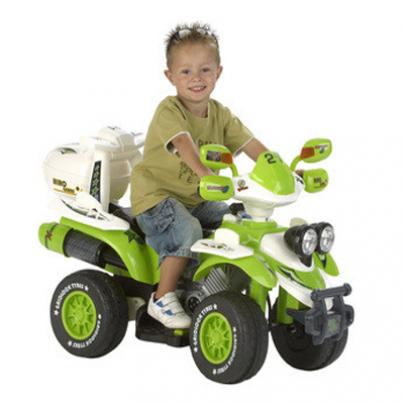If you are like most parents, you have fond memories of riding your bike as a child. You may recall riding bikes with your friends through your neighbourhood or taking a family bike ride with your parents and siblings from time to time. As a parent, you want to provide your child with similar memories, and this all begins with the purchase of your child’s first bike. In order to ensure that your child has a comfortable and safe experience on his bike, you will want to pay attention to a few features as you search for the right bike to purchase.
The Right Size
Perhaps the most important feature to pay attention to is the size of the bike. Kids’ bikes are available in a variety of sizes, and the size of the bike correlates to the size of the child. Most children’s bikes have a seat adjustment feature, and this allows the bike to grow with the child somewhat. The bike’s size rating takes into account the adjustability of the seat’s height. By choosing the right size of bike, you can ensure that your child can reach the handlebars and the pedals comfortably.

The Weight of the Bike
Many bicycles designed for avid cyclists are ultra-lightweight, but most bikes for children are rather heavy in weight. The heavy weight may not be noticeable when a child is using training wheels, although the added weight can make it more difficult for a child to pedal the bike. The weight of the bike may be most noticeable to a child when the training wheels are removed and the child is required to balance and pedal the bike. Most kids will get used to riding a heavier bike eventually, but they may be more likely to tip over and fall with a heavier bike. This is because a heavier bike may be more difficult to balance on. Furthermore, a child may pedal more slowly on a heavier bike, and this would increase the likelihood of falling. Therefore, it is important to pay attention to the weight of the bike when making a purchase.
Training Wheels
When you purchase a bike for a child who has never ridden a bike before, buying a bike that can accommodate training wheels is important. You can purchase training wheels separately if needed, but you should consider if the bike’s design will accommodate training wheels to be added to the frame. Many bikes designed for younger or smaller children come with training wheels that can be removed once the child learns how to balance when riding the bike.
Braking Features
As a final note, pay attention to the braking features on a bike. Many kids bikes are designed with pedal brakes and hand brakes, but some bikes may have only one or the other. The coordination of young kids may be lacking, so the ability to have both braking options may be beneficial for safety reasons. It can be a challenge to find the right bike for your child. However, when you focus on these features of a bike, you can most easily make an excellent buying decision that promotes safety and comfort for your child.
Kelly prides herself as an active mum who makes sure her kids get a good dose of vitamin D and exercise in the weekends. Kelly bought her two sons Merida bikes at their 15th birthday.

